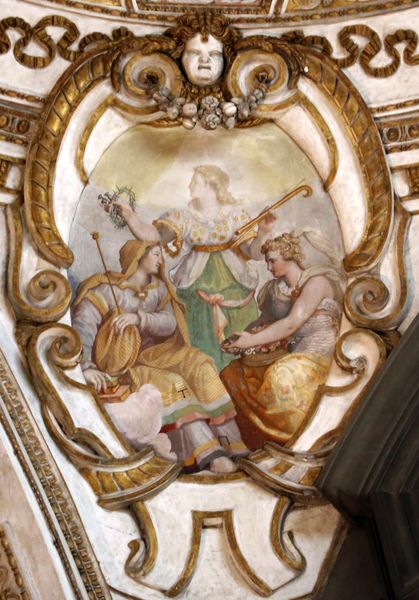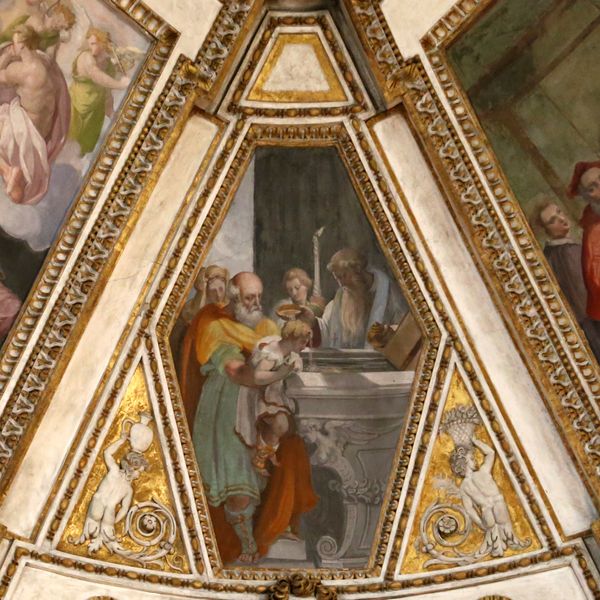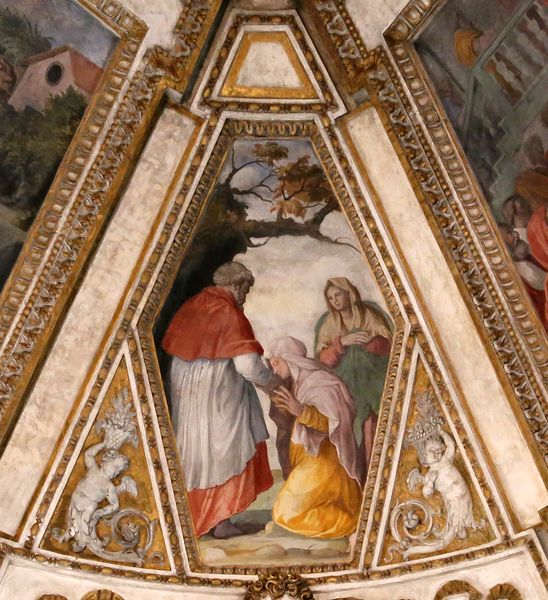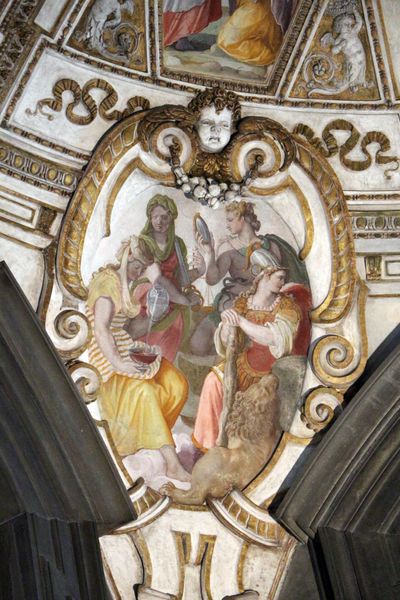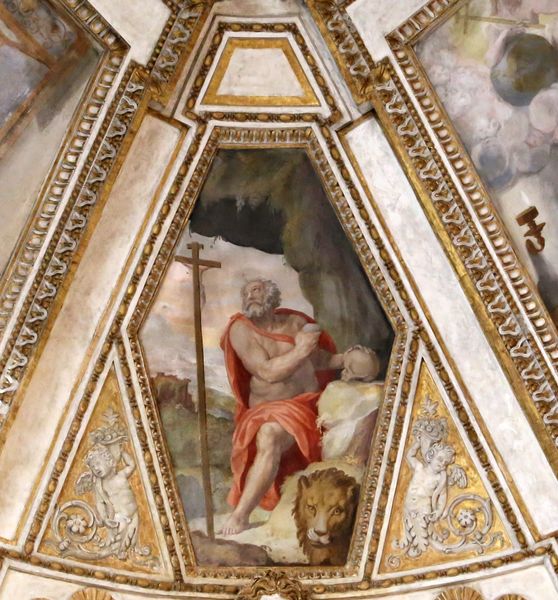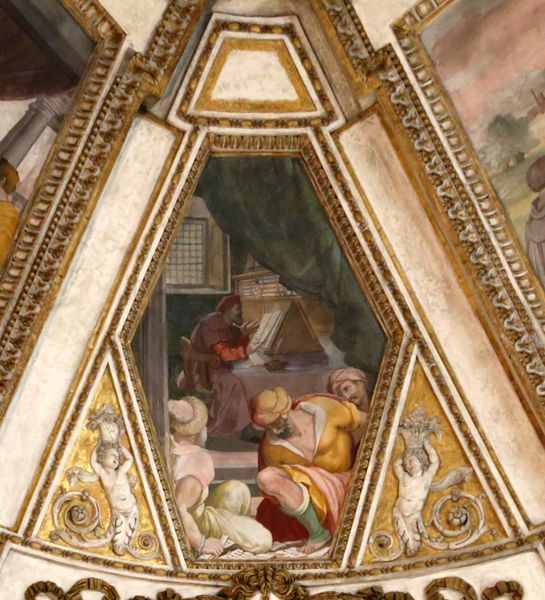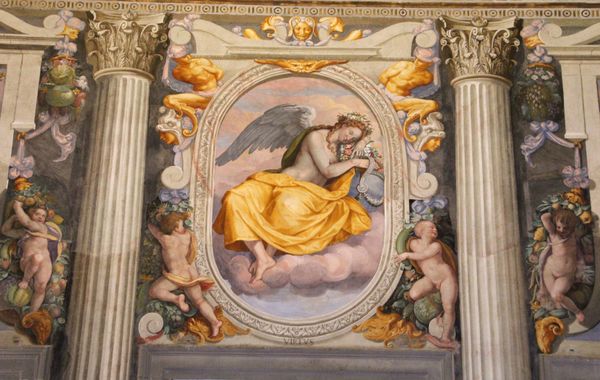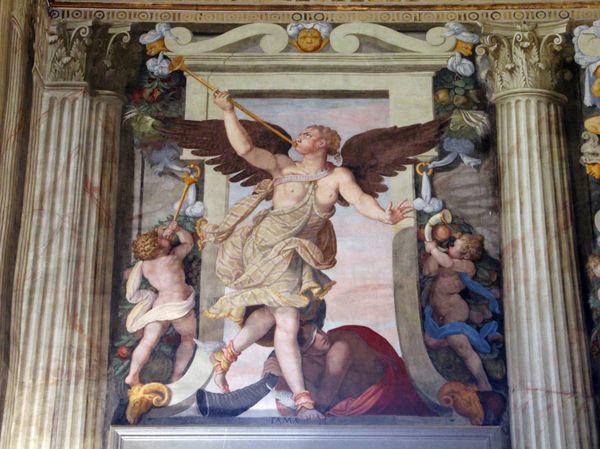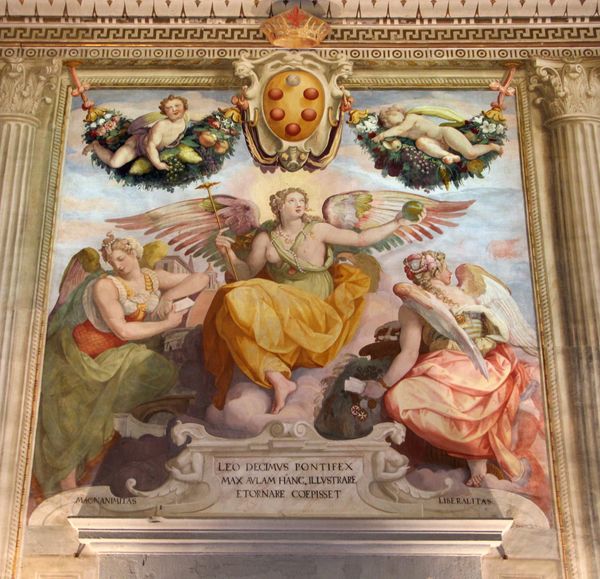
painting, fresco
#
portrait
#
allegory
#
painting
#
mannerism
#
figuration
#
fresco
#
italian-renaissance
Copyright: Public domain
Editor: This is Alessandro Allori's "Stories of St. Jerome," a fresco painted in 1577, currently in Santa Maria Novella, Florence. It has an allegorical quality, and the figures seem poised, almost theatrical. What do you see in this piece that informs our understanding of its time? Curator: Allori situates us firmly within late Mannerism, where elegance and artifice often trump naturalism. Notice the stylized poses, the elongated limbs, and the almost porcelain-like skin tones. Consider, though, what the deliberate construction of these figures tells us about the social ideals of the Florentine elite at that time. Who gets memorialized, and in what way? Editor: So it's not just about aesthetics, but also about conveying status and power? Curator: Exactly. The allegorical figures surrounding St. Jerome—Prudence, Justice, and Temperance—weren't merely decorative. They are gendered embodiments of virtues valued by the ruling class, reinforcing their perceived right to govern. Does the gender of these allegorical figures complicate your understanding of their role and position of power within the composition? Editor: That’s an interesting point. I hadn’t considered that the gendering of virtues contributes to a specific, perhaps limited, idea of authority. It seems relevant, thinking about Renaissance ideals and power structures. Curator: And remember, the stories represented were carefully selected and framed. Whose voices were amplified, and whose were silenced? What narrative is Allori subtly promoting, and for whom? Editor: This artwork invites us to question the very narratives that it visually presents. It has certainly given me a lot to think about in relation to Renaissance power structures. Curator: Absolutely. Art like this reflects and refracts the values of its time. It challenges us to unpack its meaning and see how these values continue to resonate, and often clash, with contemporary concerns about identity, justice, and representation.
Comments
No comments
Be the first to comment and join the conversation on the ultimate creative platform.
